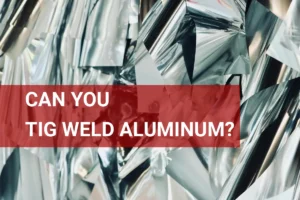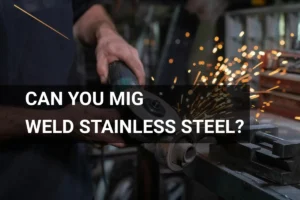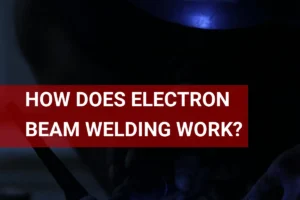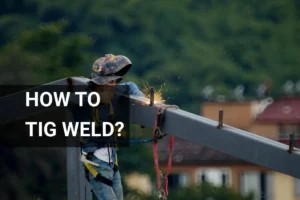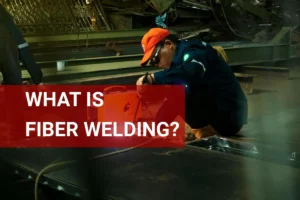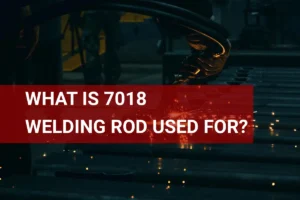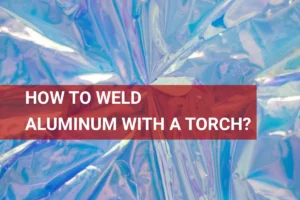What is Spot Welding? Learn About Process, Uses, and Tips
Published on: June 24, 2025 | Last modified: March 4, 2025
By: Joe Carter
So, if you are wondering what is spot welding? It’s crucial to comprehend because it impacts strength and durability in constructions. From my experience, using this technique speeds up production while ensuring reliable joints.
In this guide, we’ll explore how spot welding works, different types of spot welding, the steps involved, factors that can affect the outcome, common issues, and advanced tips for aftercare. We’ll also look at practical uses and when to consider different welding methods. You’ll find everything you need to know—including how to use a spot welder effectively.
Contents
- What is Spot Welding?
- How Does Spot Welding Work?
- Types Of Spot Welding
- Comparative Techniques in Welding
- Steps for Spot Welding
- Factors Affecting Spot Welding
- What Could Go Wrong: Common Issues
- Aftercare, Inspection, and Advanced Tips for Spot Welding
- Real-world Uses for Spot Welding
- When to Try A Different Approach
- Frequently Asked Questions (FAQs)
- Conclusion
- References
What is Spot Welding?
It’s a process that joins metal pieces by applying heat and pressure to specific spots. Typically used in automotive and appliances, it’s efficient for mass production and creates strong, durable bonds.
How Does Spot Welding Work?
Spot welding joins two or more metal pieces using heat from electrical resistance. A welding machine applies high electric current (About 1,000 to 20,000 Amps) to the metals while applying pressure. The localized heat melts a small area, creating a weld spot. This occurs in milliseconds, keeping the surrounding metal cool and preventing distortion.
The squeeze time is crucial in spot welding. It’s the duration the electrodes apply pressure before the current flows. Proper calibration ensures efficient welds and minimizes defects.
Understanding this technique is essential in metalworking. Spot welding is a cornerstone of automotive manufacturing, and knowing how to use a spot welder can make a significant difference. It’s about harnessing the right amount of energy at the right moment to achieve a strong bond.
Types Of Spot Welding
What are the different types of spot welding?
-
Resistance Spot Welding
This type uses heat generated by electrical resistance. A spot welder joins metal parts by applying a concentrated electrical current, creating heat to melt the metal surfaces. Align the metals, press them together with electrodes, and apply a current for a set time—often just milliseconds. Understanding the various welding processes can help improve your technique and results.
Although welding involves exposure to strong magnetic fields and metal particulates, welders can safely get an MRI when protocol is followed to minimize risks.
-
Projection Spot Welding
This method uses raised spots (Or Projections) on the workpiece to concentrate welding energy. It’s a form of resistance spot welding, allowing precise energy delivery during the process. Place the parts together, apply pressure with the electrodes, and trigger the spot welder, letting the projections do the work.
-
Capacitor Discharge Spot Welding
This technique uses stored electrical energy for quick welds. It’s effective on thin metal pieces where less heat is necessary. Charge the capacitor, place the metal pieces together, and discharge the energy rapidly to create a weld in a fraction of a second.
-
Laser Spot Welding
This modern method uses focused laser beams for precision, making it ideal for intricate parts or dissimilar materials. Direct the laser onto the joint area, melting the metals and forming a strong bond with a minimal heat-affected zone.
-
TIG Spot Welding
This technique uses tungsten inert gas (TIG) for welding, offering versatility. Unlike conventional spot welding, it provides better control for precise applications. Set up the welder, use a non-consumable tungsten electrode, and create the weld puddle while adding filler material if needed. To ensure a strong and reliable joint, it is crucial to understand the importance of a hot pass during the welding process.
Comparative Techniques in Welding
Let’s delve into how spot welding stacks up against similar welding methods.
| Welding Technique | Process Overview | Best For | Welding Thickness Range |
|---|---|---|---|
| Spot Welding | Uses concentrated electrical heat at specific points to join metals. | Thin metals, especially in automotive and appliance fabrication. | 0.5 mm to 3 mm (0.02 in to 0.12 in) |
| MIG Welding | Utilizes a continuously fed wire electrode and a shielding gas. | Thicker materials, versatile for various metals. | Up to 25 mm (1 in) or more depending on setup. |
| TIG Welding | Employs a non-consumable tungsten electrode for precision welding. | Thin-walled or intricate metal work such as pipes and vessels. | 0.5 mm plus, highly controlled. |
| Laser Welding | Uses a focused laser beam to melt the metal surfaces. | Precision applications, often in electronics and medical devices. | Very thin materials, down to 0.2 mm (0.008 in). |
As you can see, each welding technique has its strengths and optimal uses. Choose wisely based on your project needs!That covers the various types of spot welding. Let’s now take a look at the steps involved in spot welding.
Steps for Spot Welding
Now, we’ll cover the steps in the spot welding process. Follow these steps to achieve strong, reliable welds.
-
Prepare the Workpieces
Start by ensuring your workpieces are clean and aligned. Remove any rust, grease, or dirt to avoid issues during welding. A good connection is vital; even a small contaminant can ruin the weld. Aim for a surface roughness of about 0.5 to 1.5 µm for proper electrode contact.
-
Align the Electrodes
Next, position the electrodes over the areas you wish to weld. The electrodes should be parallel and firmly aligned on the workpieces. Ensure the electrode tip diameter is appropriate; typically, 6 mm (1/4 in) is standard for general welding. Proper alignment ensures uniform current distribution, crucial for a consistent joint. Understanding the hazards of welding includes knowing about what is weld flash.
-
Apply Pressure
Now, apply pressure to your workpieces using the spot welder. This pressure holds the pieces tightly together for better current flow. Insufficient pressure can lead to weak or incomplete welds. Typically, apply a pressure of 10 to 15 psi (68 to 103 Kpa), depending on material thickness.
To ensure optimal welding results, understanding how thick different materials can be welded is essential. Discover how thick a Lincoln 140 weld to achieve strong and reliable connections.
-
Initiate the Welding Current
Once the pressure is applied, start the welding current. This current generates heat, melting the surfaces of both workpieces together. Use a current appropriate for your material; for example, low carbon steel usually requires 4,000 to 12,000 amps for an effective weld. Timing also matters: aim for a squeeze time of 1 to 2 seconds for a good bond. To ensure quality results, it’s essential to choose the right electrode based on your specific welding needs.
-
Cool and Release
After applying the welding current, allow the joint to cool briefly while maintaining pressure. This cooling time solidifies the molten material. Usually, a cooling phase of 2 to 5 seconds works well for common metals. Once cool, release the electrodes and inspect your work; a clean release avoids defects and promotes quality.
You should now have a good understanding of the spot welding process and its steps. In the next part, we’ll discuss the factors influencing spot welding.
Factors Affecting Spot Welding
What factors influence the efficiency and quality of spot welding?
-
Material Thickness
Material thickness is crucial in the spot welding process. If the materials are too thick, the current may not penetrate effectively, leading to weak welds.
-
Electrode Force
Electrode force ensures a firm connection during welding. An optimal force is typically 30 to 70 psi (Pounds Per Square Inch). Insufficient force can cause poor contact, while excessive force may warp the materials.
-
Welding Current
The right welding current is vital. Too low a current results in incomplete welds, while excessive current can damage the materials. A common setting ranges from 5 to 12 kA (Kiloamperes) for effective joining.
-
Heat Treatment
The specific heat treatment of materials influences their weldability. Previous heating or quenching can alter material properties, such as hardness and ductility, affecting spot welding quality.
-
Workpiece Cleanliness
Clean surfaces are essential for a good spot weld. Contaminants like rust, oil, or dirt can impede electrical conductivity and create weak joints. Regular cleaning is crucial before welding.
We have now covered the elements influencing spot welding. Next, we will examine potential problems and common challenges.

What Could Go Wrong: Common Issues
Let’s explore common problems you might face with spot welding.
-
Poor Weld Quality
Poor weld quality can lead to a weak joint. Look for uneven surfaces or cracks. Increase weld time and check pressure settings, aiming for 5 to 10 kN.
-
Inconsistent Heat Distribution
Inconsistent heat distribution can reduce the effectiveness of spot welding. It’s crucial to calibrate your welder properly. Check electrodes for wear and replace them if they show more than 1 mm of wear.
-
Electrode Wear
Electrode wear can affect weld integrity. Inspect electrodes after every 200 parts and replace them if they’re misshapen.
-
Misalignment Of Parts
Misalignment of parts leads to poor contacts. Always confirm correct alignment using precise jigs or fixtures before welding.
-
Insufficient Power Supply
Insufficient power supply can weaken the weld. Verify that your power source delivers the required voltage of 4 to 8 V and meets your project’s amperage needs.
We covered common issues that could arise in spot welding. Next, we will cover aftercare, inspection, and advanced tips.
Aftercare, Inspection, and Advanced Tips for Spot Welding
Here are key actions to ensure longevity and quality after your spot welding work.
Aftercare Tips
After your spot welding job, let the weld cool to 10°C (18°F) below room temperature for optimal strength. Clean the weld area with a wire brush to remove oxide and slag. Apply a rust preventative, like zinc spray, within an hour to minimize corrosion, which can start in less than 24 hours!
Welders should also implement strategies to maintain health and prevent cancer from welding exposure.
Inspection Checklist
Inspect welds closely with a magnifying glass to check for voids or inclusions. Look for consistent nugget size—aim for 4 mm (0.16 Inches) in diameter for strong joints. Use tools like the Weld Analyzer to measure current and ensure settings are between 1800–2600 amps, crucial for quality welds.
Expert Tips
Here’s a pro tip from my past projects: fine-tune your squeeze time to 10–20 cycles per second for thin metals to improve weld consistency. Also, keep your workpiece edges clean. Use calipers to maintain gap distances below 0.5 mm (0.02 Inches) for optimal penetration. This is a game changer for ensuring those welds stick! Ensuring safety during welding is crucial so understand the risks of welding without a mask.
Real-world Uses for Spot Welding
I’ve known people to use spot welding for automotive parts assembly. However, it has many unique applications, such as:
- Electronics Manufacturing: Spot welding is crucial for connecting battery packs in devices like smartphones and laptops. It’s quick and ensures a strong bond.
- Appliance Fabrication: In making microwaves and refrigerators, spot welding efficiently joins metal sheets, saving time and costs.
- Metal Furniture Production: Spot welding joins metal frames for chairs and tables, providing strong, clean joints that need minimal finishing.
- Aerospace Components: Spot welding is used for fuselage assembly due to its precision and strength, which are vital for meeting safety standards.

When to Try A Different Approach
If you’re looking for alternatives to spot welding, consider using MIG (Metal Inert Gas) or TIG (Tungsten Inert Gas) welding. I’ve found these methods, such as the Lincoln Electric Power MIG 210, work well when dealing with thinner materials or when you need more control over the weld. Plus, if you’re working with metals like aluminum or stainless steel, these options might save you time and hassle.
Another solid option is adhesive bonding. When you need to join dissimilar materials, this might be your best bet, especially with products such as Loctite Epoxy Weld. Speaking from my own experience, blending these methods can really meet diverse project needs and improve efficiency without compromising strength.
Frequently Asked Questions (FAQs)
We have covered some common queries I typically get asked about spot welding. Here are a few unique questions.
What is the Difference Between Spot Welding and Normal Welding?
The difference between spot welding and normal welding lies in the method and application. Spot welding uses heat from electric current, while normal welding often employs an external heat source like a flame or an electric arc. Spot welding is ideal for thin materials, typically between 0.5 mm to 3 mm (0.02 In to 0.12 In) thick.
Why Would You Spot Weld?
You’d spot weld because it’s a fast, efficient way to join metal parts. This technique minimizes thermal distortion and ensures a strong bond. Spot welding can increase production rates—up to 1,000 joints per hour—making it popular in automotive manufacturing.
Is Spot Welding Stronger Than MIG Welding?
No, spot welding is not typically stronger than MIG welding. Spot welds work best for sheet metals and have specific strength advantages; however, MIG welding offers better penetration and is suitable for thicker materials. Each method has its place depending on the application’s needs.
How Does Spot Welding Work?
Spot welding works by generating heat through electrical resistance at a localized point. You apply pressure to the surfaces being welded, typically using welding electrodes, which melt the metal to create a bond. This process happens in mere seconds, making it efficient and is often used in various industries for its speed and effectiveness. For more on this topic, check out the detailed explanation of spot welding processes.
What is Squeeze Time in Spot Welding?
Squeeze time in spot welding refers to the duration in which the electrodes apply pressure before and after the weld occurs. This time is critical as it helps forge a strong joint by allowing heat distribution. Typically, squeeze time ranges from 20 to 50 cycles or 0.02 to 0.05 seconds.
Conclusion
Phew, we covered a lot in this article about what is spot welding. We discussed how it works, different types, the steps involved, factors affecting the process, common issues that can arise, along with aftercare tips and real-world applications. Not to mention, we even explored when to consider alternative methods and answered frequently asked questions.
So, what is spot welding? Simply put, it’s a method used to join two or more pieces of metal by applying heat and pressure at specific points. By using electrical currents and precise timing, you can create strong welds in materials like steel, copper, and aluminum in seconds. Contact me if you’d like more guidance on how to use a spot welder effectively or need tips on troubleshooting common welding problems.
If you’re interested in further expanding your knowledge on welding techniques and practices, be sure to explore the details available at What is Welding.
References
- Lincoln Electric. (2020). The Procedure Handbook of Arc Welding (15th ed.). Cleveland, OH: Lincoln Electric Company.
- American Society of Mechanical Engineers. (2019). ASME Section IX: Welding and Brazing Qualifications. New York, NY: ASME.
Joe Carter is a retired welding professional with over 40 years of hands-on experience in the industry, spanning ship repair, structural welding, and even underwater projects. Joe is a master of MIG, TIG, and Stick welding. Passionate about mentoring the next generation of welders, Joe now shares his decades of expertise and practical insights to help others build rewarding careers in welding.
Adhesive Bonding, Automotive Manufacturing, Metalworking, MIG Welding, Spot Welding, Tips For Welders, Welding, Welding Process, Welding Techniques
